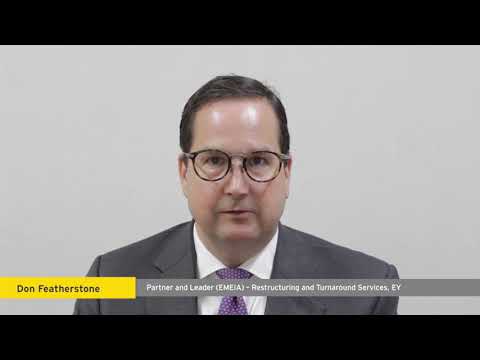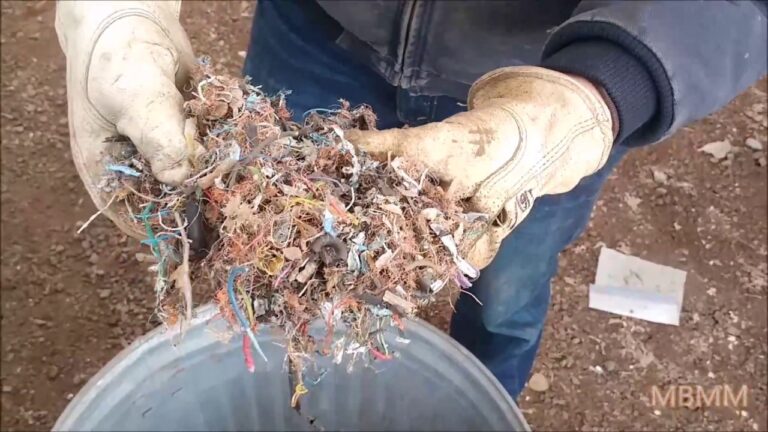High-paying CRO Job: Chief Restructuring Officer (CRO) – Description & Salary

Chief Restructuring Officer (Cro) Job Description Template
Chief Restructuring Officer (CRO) Job Description The Chief Restructuring Officer (CRO) is a senior executive responsible for overseeing and implementing financial and operational restructuring efforts within an organization. Their primary role is to analyze the company’s financial performance, identify areas of improvement, and develop and execute strategies to enhance profitability and sustainability. The CRO collaborates with various departments, including finance, operations, and human resources, to assess the current state of the organization and identify potential risks and opportunities. They work closely with the executive team to create and implement restructuring plans, which may involve cost-cutting measures, operational streamlining, debt restructuring, or asset divestment. One of the key responsibilities of a CRO is to manage and negotiate with stakeholders, including creditors, shareholders, and lenders, to achieve consensus on restructuring plans and secure necessary funding. They must possess strong leadership and communication skills to effectively guide the organization through the restructuring process and maintain stakeholder confidence. Additionally, the CRO monitors and evaluates the progress of restructuring initiatives, making adjustments as needed to ensure their success. They also develop and implement performance metrics to measure the effectiveness of restructuring efforts and provide regular reports to the executive team and board of directors. In summary, a Chief Restructuring Officer plays a crucial role in leading and executing financial and operational restructuring efforts within an organization. Their expertise and strategic vision are instrumental in navigating through challenging times and positioning the company for long-term success.Chief Restructuring Officer (Cro) Responsibilities
Chief Restructuring Officer (Cro) Requirements
How Much Does A Chief Restructuring Officer (Cro) Make?
Chief Restructuring Officer (CRO) Salary
| Experience Level | Salary Range |
|---|---|
| Entry-level | $100,000 – $150,000 |
| Mid-level | $150,000 – $250,000 |
| Senior-level | $250,000 – $500,000 |
| Executive-level | $500,000+ |
A Chief Restructuring Officer (CRO) is a high-level executive responsible for overseeing and implementing strategic changes within a company to improve its financial performance and stability. The CRO plays a crucial role in leading and managing the restructuring process, which often involves significant challenges and complex decision-making.
The salary of a CRO varies depending on factors such as the level of experience, company size, industry, and geographical location. The table above provides a general salary range for CRO positions based on experience levels. Entry-level CROs can expect to earn between $100,000 and $150,000 annually, while mid-level CROs may earn between $150,000 and $250,000. Senior-level CROs with extensive experience can earn salaries ranging from $250,000 to $500,000 or more. Executive-level CROs, who typically hold top leadership positions, may earn salaries of $500,000 or higher.
It’s important to note that these salary ranges are approximate and can vary significantly depending on various factors such as the company’s financial situation, industry trends, and the CRO’s individual qualifications and track record. Additionally, benefits, bonuses, and incentives may also be included in the overall compensation package for a CRO.
Chief Restructuring Officer (Cro) Salaries by Country
Top Paying Countries for Chief Restructuring Officer (Cro)
| Country | Average Salary (USD) |
|---|---|
| United States | 300,000 |
| Switzerland | 280,000 |
| Australia | 250,000 |
| United Kingdom | 240,000 |
| Germany | 230,000 |
Here is a list of the top paying countries for Chief Restructuring Officers (Cro) based on average salaries. The United States ranks first with an average salary of $300,000, followed by Switzerland with $280,000. Australia, United Kingdom, and Germany also offer competitive salaries for Cro professionals, ranging from $230,000 to $250,000. These figures indicate the high demand for Cro expertise in these countries, as well as the importance of effective corporate restructuring in today’s global business landscape.
A video on the topic Chief Restructuring Officer (Cro)
Video Source : EY IndiaInterview Questions for Chief Restructuring Officer (Cro)
1. What is the role of a Chief Restructuring Officer (CRO)?
A Chief Restructuring Officer (CRO) is a senior executive responsible for leading and overseeing the restructuring process of a company facing financial distress or major operational challenges. The CRO’s role involves developing and implementing strategic plans, managing stakeholders, negotiating with creditors, and ensuring the company’s long-term viability.
2. What qualifications and skills are necessary to become a Chief Restructuring Officer?
To become a Chief Restructuring Officer, one typically needs a strong background in finance, business management, and restructuring. A solid understanding of corporate finance, accounting, and legal frameworks is essential. Excellent leadership, communication, and negotiation skills are also crucial for effectively managing stakeholders and driving successful restructuring initiatives.
3. How do you assess the financial health of a company as a Chief Restructuring Officer?
As a Chief Restructuring Officer, I would assess the financial health of a company by analyzing its financial statements, cash flow projections, and debt obligations. I would also review the company’s operational performance, market position, and competitive landscape. Additionally, conducting stress tests and scenario analyses would help identify potential risks and determine the appropriate restructuring strategies.
4. What steps would you take to develop a successful restructuring plan?
To develop a successful restructuring plan, I would first conduct a comprehensive assessment of the company’s financial and operational challenges. This would involve identifying key issues, such as excessive debt, inefficient operations, or declining market share. Then, I would work with the management team to develop strategic initiatives, such as cost-cutting measures, asset divestitures, or operational improvements, tailored to address these challenges and restore the company’s financial health.
5. How would you manage and negotiate with creditors during the restructuring process?
Managing and negotiating with creditors during the restructuring process requires open and transparent communication. I would proactively engage with creditors to understand their concerns and objectives, and work towards finding mutually beneficial solutions. This may involve renegotiating debt terms, extending repayment schedules, or offering equity stakes in the restructured company. Building trust and maintaining regular communication would be key to achieving successful creditor negotiations.
6. How do you ensure the long-term viability of a company after restructuring?
To ensure the long-term viability of a company after restructuring, I would focus on implementing sustainable business practices and addressing the root causes of the financial distress. This may involve streamlining operations, improving cost management, diversifying revenue streams, or investing in new technologies. Additionally, developing a strong corporate governance framework and fostering a culture of continuous improvement would help sustain the company’s financial health in the long run.
7. How would you manage the stakeholders’ expectations during the restructuring process?
Managing stakeholders’ expectations during the restructuring process requires effective communication and transparency. I would proactively engage with stakeholders, such as employees, investors, suppliers, and customers, to provide regular updates on the progress of the restructuring initiatives. By clearly articulating the objectives, risks, and potential outcomes, I would strive to align their expectations with the realities of the situation, while also addressing any concerns or uncertainties they may have.
8. Can you provide an example of a successful restructuring project you have led?
During my tenure as a Chief Restructuring Officer at Company X, I successfully led a restructuring project that turned around the company’s financial performance and secured its long-term viability. By implementing a comprehensive cost reduction program, optimizing the supply chain, and renegotiating debt terms, we were able to significantly improve the company’s cash flow and profitability. This resulted in increased investor confidence, improved stakeholder relationships, and the successful exit from bankruptcy.
9. How do you navigate the legal and regulatory challenges associated with restructuring?
Navigating the legal and regulatory challenges associated with restructuring requires a deep understanding of bankruptcy laws, corporate governance regulations, and other relevant legal frameworks. I would work closely with legal counsel to ensure compliance with all applicable laws and regulations throughout the restructuring process. Additionally, maintaining open lines of communication with regulatory authorities and proactively addressing any potential legal issues would be crucial to mitigating risks and ensuring a smooth restructuring process.
10. How do you handle the emotional and psychological aspects of leading a restructuring process?
Leading a restructuring process can be emotionally challenging, as it often involves making tough decisions that impact the lives of employees and stakeholders. To handle these aspects, I prioritize empathy, transparency, and open communication. I would provide support to affected employees, maintaining transparency about the restructuring process and its objectives. Additionally, fostering a culture of trust and collaboration within the organization would help alleviate anxiety and facilitate a smoother transition during the restructuring process.
The Best Universities For The Chief Restructuring Officer (Cro) Profession.
Frequently asked questions about Chief Restructuring Officer (Cro)
What is a Chief Restructuring Officer (CRO)?
When is a Chief Restructuring Officer (CRO) appointed?
What are the key responsibilities of a Chief Restructuring Officer (CRO)?
1. Developing and implementing a comprehensive restructuring plan: The CRO works closely with stakeholders to assess the company’s financial situation, identify areas of improvement, and develop a strategic plan to address the challenges. This may involve cost-cutting measures, renegotiating contracts, selling assets, or seeking additional financing.
2. Managing the restructuring process: The CRO oversees the execution of the restructuring plan, ensuring that the necessary changes are implemented effectively and efficiently. They may need to make tough decisions, such as layoffs or closing underperforming divisions, to improve the company’s financial viability.
3. Negotiating with creditors and other stakeholders: The CRO engages in negotiations with creditors, suppliers, employees, and other stakeholders to reach agreements on debt restructuring, payment terms, or other arrangements. They aim to strike a balance between the interests of various parties and secure the necessary support for the restructuring efforts.
4. Communicating and reporting progress: The CRO keeps stakeholders informed about the progress of the restructuring process, providing regular updates and transparent communication. This helps build trust and confidence among stakeholders and ensures alignment towards the common goal of turnaround and long-term success.
5. Providing leadership and guidance: As a senior executive, the CRO provides leadership and guidance to the company’s management team and employees. They inspire and motivate the team to embrace change, overcome challenges, and navigate through the restructuring process. The CRO also plays a crucial role in building a culture of accountability, transparency, and performance improvement within the organization.
What qualifications and skills does a Chief Restructuring Officer (CRO) need?
1. Extensive experience in finance and operations: A CRO should have a strong background in finance, including knowledge of financial analysis, budgeting, and financial modeling. They should also have a deep understanding of operational processes and strategies to identify areas of improvement and drive efficiencies.
2. Legal knowledge and understanding of bankruptcy laws: Since many restructuring processes involve bankruptcy or insolvency proceedings, a CRO should have a solid understanding of bankruptcy laws and regulations. This enables them to navigate through complex legal frameworks and make informed decisions.
3. Strategic thinking and problem-solving skills: A CRO needs to be able to analyze complex situations, identify problems, and develop innovative solutions. They should have strong strategic thinking and problem-solving skills to address the financial, operational, and organizational challenges faced by the company.
4. Leadership and communication skills: As a senior executive, a CRO should possess strong leadership skills to inspire and guide the management team and employees. They should be able to communicate effectively with stakeholders, including creditors, suppliers, and employees, to build trust, negotiate agreements, and drive alignment towards the restructuring goals.
5. Resilience and adaptability: Restructuring processes can be intense and challenging. A CRO should have the resilience to navigate through uncertainty, handle stressful situations, and make tough decisions. They should also be adaptable to changing circumstances and able to adjust the restructuring plan as needed to achieve the desired outcomes.
How long does a Chief Restructuring Officer (CRO) typically serve?
In other cases, a CRO may be brought in on a temporary basis, such as a few months, to provide immediate leadership and guidance during a critical period. Once the company’s financial situation improves or a permanent executive is hired, the CRO’s role may come to an end.
Ultimately, the duration of a CRO’s service is determined by the company’s needs and the progress made in achieving the desired outcomes of the restructuring efforts.






